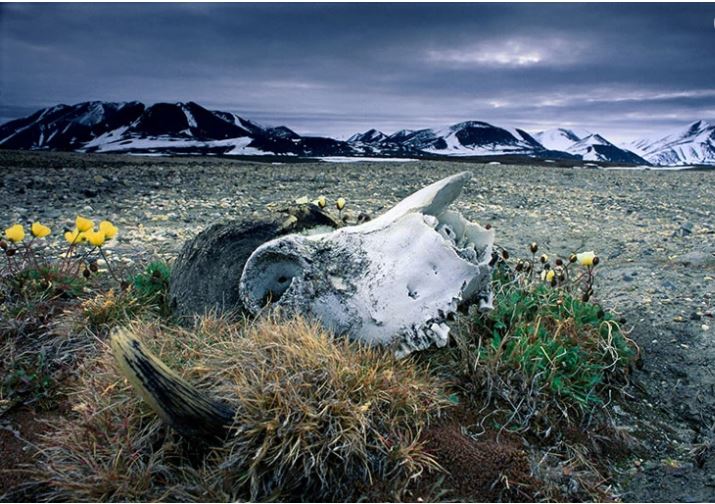Highly interesting article on the development of life in the North was published on 7 December 2022 in Highly interesting article on the development of life in the North was published on 7 December 2022 in Nature. Genetic material collected from permafrost shows the northern part of Greenland was once a lush forest, home to poplar trees and other surprising organisms.
The northeastern tip of Greenland is a lonely, barren place, home to the odd hare and musk ox, and few plants. Two-million-year-old DNA sequences — the oldest ever obtained — recovered from frozen soil suggest that the region was once home to mastodons and reindeer that roamed a forested ecosystem unlike any now found on Earth.
“No one would have predicted this ecosystem in northern Greenland at this time,” says Eske Willerslev, a palaeogeneticist at the University of Copenhagen who co-led a study published on 7 December in Nature describing the ancient-DNA findings1.
Over the years, Willerslev and his team periodically tested the Kap København sediment, as methods for extracting and sequencing ancient DNA improved. A couple of years ago, they got their first success. All told, they sifted through more than 16 billion DNA fragments — many from modern microorganisms that had contaminated the samples — to identify shards of authentic ancient DNA. “It’s a massive sequencing effort,” Willerslev says.
When the team matched these sequences to databases of genomes from modern plants and animals — which sometimes differ substantially from those of the organisms’ ancient relatives — a snapshot emerged of Kap København two million years ago. Greenland was much warmer then, but the researchers did not expect the DNA sequences to reveal forests of poplar, spruce and yew trees such as those now typically found at much lower latitudes, alongside sedges, shrubs and birch-tree species that still grow in Greenland.
Kap København’s animal life, detailed in sequences probably from reindeer and mastodons — extinct relatives of elephants — as well as rodents, geese and rabbits, held even more surprises. “Reindeers, according to palaeontologists, should not have survived; they shouldn’t even exist at that time,” says Willerslev. Mastodons were thought to have lived in North American forests, and their remains have never been found in Greenland.
“You would have expected such gigantic animals to be hard to miss in the fossil record,” says Ludovic Orlando, an ancient-DNA specialist at the Centre for Anthropobiology and Genomics of Toulouse in France. Such findings show the potential of ancient sedimentary DNA to yield surprising insights about past ecosystems.
Willerslev thinks his team’s work could say something about how future ecosystems will respond to climate change, as well. “In these organisms is an ability to adapt in composition and in range that we don’t understand and we can’t predict,” he says.
To read the full article click here and visit Nature
Kap København
The Kap Kobenhavn Formation, North Greenland, is a 100-m thick succession of predominantly shallow marine nearshore sediments, dated to c. 2.4 ma. The abundant well preserved remains of mosses, land plants, foraminifers, ostracodes, insects, cladocers, molluscs, and a few vertebrates enable a detailed reconstruction of terrestrial and marine environments and climate. The sediments indicate a complex sea-level history implying combined glacioisostatic and -eustatic control. This is supported by the faunal and floral development from arctic to subarctic and boreal conditions, and the record probably reflects the demise of the first major Cenozoic ice sheet, the Praetiglian, over the area, and the onset of the succeeding Tiglian A interglacial. The record ends with the attainment of the interglacial sea-level highstand and climate optimum when forest tundra reached the world's northernmost coasts. It is inferred that the duration of sedimentation was a half obliquity cycle, i.e. 20,000 yr, at the most (Late Pliocene Greenland - The Kap Kobenhavn Formation in North Greenland - Svend Funder, Ole Bennike, Jens Bocher, Carsten Israelson, Kaj Strand Petersen & Leifur A. Simonarson)
Source: Nature / Late Liocene Greenland - The Kap Kobenhavn Formation in North Greenland

